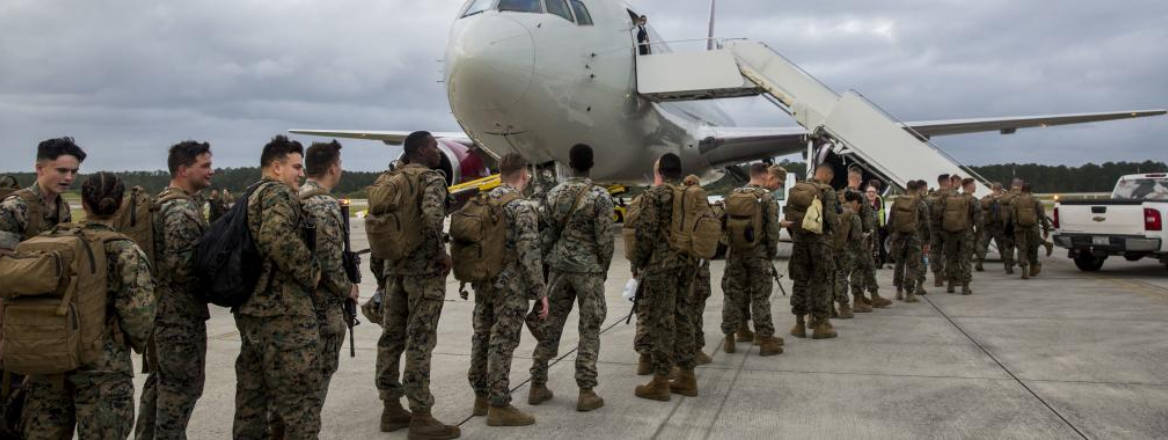NATO’s Trident Juncture 2018 Exercise: Political Theatre with a Purpose
NATO’s Trident Juncture 2018 military exercise has served to solidify ties between member states, but the Alliance remains vulnerable in the eventuality of a military confrontation from Russia.
NATO has concluded its largest live exercise since the Cold War, after 50,000 troops from 31 countries participated in Trident Juncture 2018, held from 25 October – 7 November in Norway. With its simulation of an invasion triggering an Article Five mutual security guarantee commitment from Alliance member states, Trident Juncture 2018 underscored growing tensions with Moscow. But the politics of the exercise was primarily aimed at bolstering the internal confidence of the Alliance, rather than deterring aggressors.
In 2011 NATO was called upon to act in Libya, and US President Barack Obama emphasised that his country would take a back seat. The Alliance soon ran into difficulties: only a third of its members participated in strike missions, and those countries quickly depleted their stockpiles of munitions. Most of the ordnance dropped ended up being American. Summing up NATO’s efforts, US Secretary of Defense Robert Gates bluntly concluded that ‘the military capabilities simply aren’t there’.
For an alliance established to counter the Soviet Union, and with 70–80% of its firepower delivered by air, the limitations of NATO’s air campaign in Libya starkly demonstrated the extent to which European capabilities had deteriorated since the Cold War. The subsequent political failure of the Libyan intervention, and the ongoing quagmire of Afghanistan, further tarnished the sense that the Alliance had a clear or unified purpose.
Russia’s annexation of the Crimea and incursion into eastern Ukraine in 2014 provided the impetus for NATO to begin reaffirming its core mission. NATO’s Communiqué after its summit in Wales in 2014 started a process of serious re-engagement across the Alliance, from the establishment of a Very High Readiness Joint Task Force to additional spending commitments.
Trident Juncture 2018 showcased how far the Alliance has come over the last four years. Much of NATO’s media output surrounding the exercise emphasised the number of countries contributing significant forces, and the level of cooperation between them, rather than highlighting particular military capabilities. Heavily scripted, and largely dependent on Norwegian bases, the exercise was less about training for complex operations than showing that Alliance members are politically united.
Although NATO drew attention to the scale of the logistical operation, including the distribution of 1.8 million meals and 4.6 million bottles of water, preparations started in August, which does not reflect the time available to deploy in an actual escalation scenario. In contrast to Russia’s Vostok-2018 drills, which saw the test firing of Russia’s latest A2AD systems and the implementation of new tactics, Trident Juncture 2018 was highly conventional. Indeed, the UK’s main lessons from the exercise were derived from the challenges of getting its personnel to Norway.
Still, demonstrating political unity has a military purpose in delivering a deterrent effect. Russia knows full well that it is militarily inferior to NATO, and consequently has been using disinformation and political meddling to try and exacerbate divisions within the Alliance. Reaffirming the commitment of its members and having news to share that contradicts the narrative of a fraying alliance has significant value.
Most scenarios for a military confrontation would be expected to happen on the periphery of the Alliance, however, rather than starting with the invasion of a member state. Perhaps the most significant element of the exercise, therefore, was the participation of a brigade from Sweden and troops from Finland. The participation of non-NATO members not only signaled that NATO may be prepared to mobilise in their defence, but also suggested to Russia that the continuation of threatening behaviour is likely to drive its neighbours closer to NATO, rather than deterring them from membership.
Russia’s response to the exercise was to conduct missile tests near the Norwegian coast, highlighting its ability to project power into the area and its willingness to counter NATO forces. Finland has also accused Russia of jamming GPS during the exercise. Russian Defence Minister Sergei Shoigu described Trident Juncture 2018 as being aggressive in nature. While inaccurate, his comments shed light on Russia’s concerns about growing NATO activity in the Artic, an area of expanding Russian interest.
Trident Juncture 2018 has been a high point after several rough years for NATO. The key question is how the Alliance will build on its recent successes. Ongoing tensions with Turkey, a strong push from Italy to increase NATO’s involvement in the Sahel, and a vacuum of strategic leadership in Washington will continue to create political tensions among member states that Russia can exploit.
The views expressed in this Commentary are the author’s, and do not necessarily represent those of RUSI or any other institution.
WRITTEN BY
Dr Jack Watling
Senior Research Fellow, Land Warfare
Military Sciences


